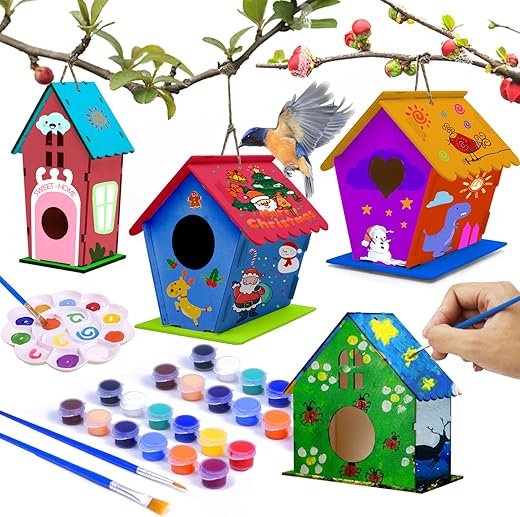How to Incorporate Sustainable Home Decor Supplies
This step-by-step guide on “How to Incorporate Sustainable Home Decor Supplies” offers a practical approach to enhancing your living spaces with eco-friendly materials. It outlines essential considerations for selecting sustainable decor items, such as choosing locally sourced or recycled materials, and provides actionable tips for integrating these supplies into your home design. By following this guide, you can create a stylish and inviting environment that reflects your commitment to sustainability, ultimately contributing to a healthier planet while beautifying your space.



Assess Your Current Decor
Evaluate your existing home decor by taking a thorough inventory of each item in your space. Identify pieces made from non-sustainable materials, such as plastic or synthetic fabrics, and make a note of them. Consider replacing these items with eco-friendly alternatives, like sustainably sourced wood furniture or organic cotton textiles, that not only enhance your space but also contribute to a healthier planet. Research local options or online stores that specialize in sustainable decor to find beautiful replacements that align with your eco-conscious goals.
Research Sustainable Materials
- Explore bamboo, a fast-growing grass that is strong and versatile. Use it for furniture like chairs and tables or decorative items like vases.
- Investigate reclaimed wood, which repurposes old wood from buildings or furniture, giving character to your home. Create rustic shelves or unique wall art.
- Examine organic cotton, grown without harmful pesticides, perfect for textiles. Choose it for curtains, cushions, or bedding that are both soft and eco-friendly.
- Consider recycled metals, which reduce waste and can be fashioned into striking decor pieces. Use them for light fixtures or accent furniture that make a statement.
Set a Budget
Determine a budget for your sustainable home decor project by listing all potential expenses. Include costs for new materials, such as eco-friendly fabrics or reclaimed wood, as well as any tools you might need for installation or crafting. Research prices online or at local stores to create an accurate estimate. Set aside a contingency fund for unexpected expenses to ensure your project stays on track.
Choose a Design Style
Identify the overall design style you wish to achieve, whether it’s modern, rustic, minimalist, or eclectic. For example, if you choose a modern style, focus on sleek lines, neutral colors, and functional furnishings. Embrace rustic elements by incorporating reclaimed wood, warm tones, and vintage accessories. Consider a minimalist approach with a clean, open space and only essential decor items, or mix various styles for an eclectic vibe by blending bold patterns and textures.
Source Sustainable Supplies
Search for local retailers that focus on sustainable home decor supplies by visiting farmers’ markets, craft fairs, or specialty shops in your area. Explore online platforms that curate eco-friendly products, such as Etsy or dedicated sustainable living websites. Check product labels for certifications such as Fair Trade, FSC (Forest Stewardship Council), or organic labels to ensure you’re making responsible choices. Compare options and read customer reviews to select the highest quality and most ethically sourced items for your home.
Consider DIY Projects
Explore sustainable DIY options by repurposing old furniture. Sand down worn wooden pieces to give them a fresh finish, or paint them in vibrant colors to match your decor style. Use eco-friendly supplies like non-toxic paints and natural sealants to ensure a safe environment. Create new decor items by crafting wall art from reclaimed wood or sewing cushions from organic cotton fabric. Embrace your creativity, and enjoy the process of making unique, personalized pieces that reflect your values and style.
Incorporate Natural Elements
- Add potted plants in various sizes around your space. Choose low-maintenance options like succulents or snake plants, which thrive indoors and improve air quality.
- Incorporate wood accents through furniture or decor items, such as a reclaimed wood coffee table or wooden picture frames. These elements add warmth and texture to your environment.
- Use natural stones, like quartz or river rocks, as decorative accents. Place them in a bowl on your coffee table or scatter them along a bookshelf for an earthy touch.
- Create a small herb garden on your kitchen windowsill. Not only does it bring greenery into your home, but it also provides fresh ingredients for your meals.
Plan Your Layout
Assess the natural light in your space by observing how it changes throughout the day. Position your sustainable decor near windows to harness this light, enhancing the vibrancy of natural materials. Plan the flow of your space by ensuring that pathways are clear and furniture arrangements promote easy movement. Experiment with different layouts to find a balance between functionality and aesthetic appeal, allowing your decor to shine while maintaining a welcoming atmosphere.
Make the Transition
Replace non-sustainable items with eco-friendly decor gradually. Begin by identifying the items in your space that are not environmentally friendly and prioritize which to replace first. Choose decor that complements your existing design while aligning with your values. Ensure that each new item not only fits well aesthetically but also enhances the overall atmosphere of your space, creating a harmonious and sustainable environment.
Embrace Eco-Friendly Living
In conclusion, embracing sustainable home decor supplies not only transforms your living space into a beautiful sanctuary but also aligns your home with your commitment to environmental responsibility. By thoughtfully selecting eco-friendly materials, upcycling items, and supporting sustainable brands, you can create a harmonious atmosphere that truly reflects your values. I hope this journey inspires you to make mindful choices that benefit both your home and the planet. Happy decorating!
Essential Supplies Needed




